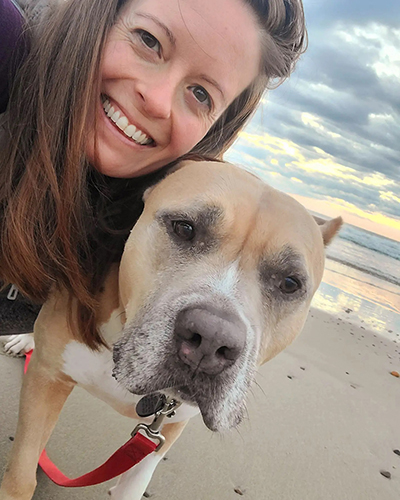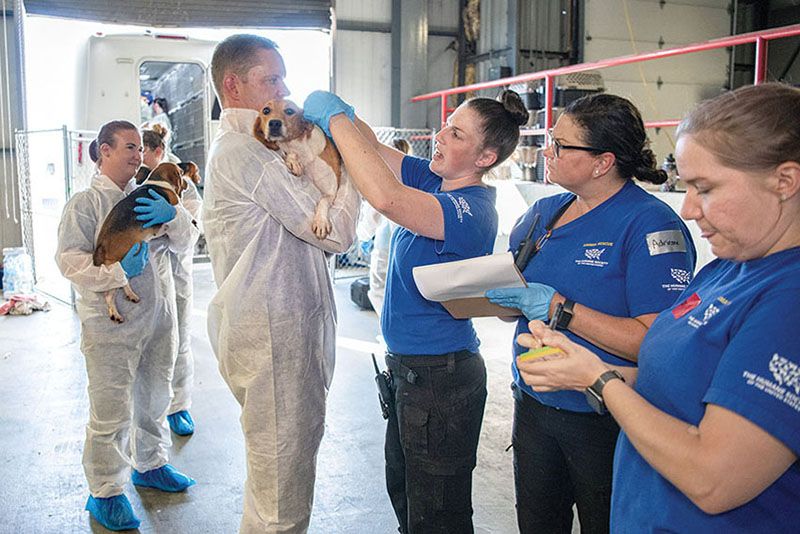Blog: Achieving work-life balance in animal welfare
When ‘no rest for the weary’ has become our field’s unspoken norm, we need to actively embrace the benefits of unplugging from work
May 5, 2023

In 2013, after eight years overseeing operations in animal shelters, I left my job, sold my house and car, and spent the next year traveling in a truck camper. Years of trying to help more animals, build foster programs, merge with another animal shelter and stay informed on sheltering best practices had taken a toll, and it took almost three months before I stopped checking my phone each morning to see if there was a work-related “emergency.” I vowed never again to reach a point where I needed months simply to recover from work.
These days, work-life balance has become a trendy topic as more people seek to escape our grind culture and pursue holistically fulfilling lives. But while for-profit corporations increasingly tout flexible work schedules and unlimited paid time off in their hiring packages, many animal welfare organizations remain stuck in the trap of too much work and too few people to do it.
It’s a cycle that encourages burnout, and the costs to our people, our organizations and our cause are immeasurable. According to The Association for Animal Welfare Advancement, the annual employee turnover rate at animal shelters is 38%, and I’ve heard shelter leaders report upward of 75% of their team leaving in the first two years. We lose talent and experience, spend enormous amounts of time trying to recruit and train new staff, and create increased workloads for staff who manage to stay.
So what’s this elusive balance we’re all trying to find? And is it possible in a field where the needs are often overwhelming, urgent and unpredictable?
Rather than reach for a 50-50 split between a career and personal life, my quest to find balance is rooted in a definition I created in which a person has the emotional and psychological safety to devote more time to their personal or professional life as needed and, importantly, when both come calling at the same time, the agency to prioritize.

As an example of how this plays out in my own life, last year the Humane Society of the United States was asked to assist in the transfer of almost 4,000 beagles from a research breeding facility. Facing a 60-day deadline, my team of two would be needed day in and day out to determine logistics, communicate with shelter partners and the media, and secure placement for each dog by Labor Day weekend. After an intense summer, I developed a work schedule through the fall that would give me time to decompress, adjust to moving in with my partner and reengage with my friends. Because I had my boss’s support, I was able take comp time without feeling guilty or pressure to soldier on.
Over the years, I’ve learned that a personal commitment to work-life balance is important, but organizational support is critical. If an employee must constantly push back against their team or leadership in order to maintain boundaries, it will increase their stress, guilt and exhaustion. Some will give up trying to achieve work-life balance and become resentful, a dynamic that serves no one, including the pets and families we’re trying to help.
Of course, understanding what work-life balance can look like is one thing, but practicing it is another, and there is no shortage of obstacles in the way. Living in a society where overwork is seen as a badge of honor—rather than a sign of a system out of balance—thwarts our efforts at every turn. It shows up when employers contact their staff outside of working hours or expect them to be available “just in case.” It shows up in rewarding staff who work overtime but not rewarding those who maintain boundaries. It shows up in a narrative that your professional worth and commitment to the mission is measured in hours worked, not impact made over the course of decades.
So what can we do about a system that discourages balance and a career that can too easily feel like our sole purpose in our life? Here are some tips to consider.
Tips for managers and leaders
Reward boundaries. Rather than only noticing when your staff work long hours, reward those who take all of their vacation time each year (Airbnb gift card, anyone?). Consider paid sabbatical programs for staff after three or more years. Longer periods of time away from work will help your staff build resilience and focus on other parts of their lives.
Model boundaries yourself. If you tend to send communications in the evenings and on your days off, you’re sending a message to your team that they should do the same, no matter how many times you assure them they shouldn’t. Work-life balance may mean flexible work schedules, but be mindful of the timing of your communications to others. Delay delivery is a simple solution.
Staff your existing programs before you start new ones. This is one of the hardest boundaries for leaders to maintain. We’re a field of strivers who want to do everything we can to help our communities and their pets, but when we continually add new programs without adequate staff, we remove the ability for people to step away from work without guilt that they’re leaving their co-workers in the lurch. Build work-life balance checks into your strategic plans (e.g., “If we want to send 30% more animals into foster care this year, do we have enough support for foster parents to ensure staff can still unplug completely from work during their time off?”).
"Over the years, I've learned that a personal commitment to work-life balance is important, but organizational support is critical."
—Lindsay Hamrick, the HSUS
Set communication standards. Do you hear the perpetual pinging of messages at the shelter that constantly activate our sympathetic/reactive nervous system? List all the ways staff communicate with one another—texts, calls, instant messenger, emails, pagers, social media posts or messaging —and then collectively choose two methods of communication most effectively used during work hours and one method of communication for after hours. For example, teams may send emails or use chat functions during the day but shift to text messages on work phones after hours.
Define after-hours emergencies. Have your staff write down every reason they’re contacted after hours for one month. You’ll be able to see trends in the types of things that can either wait until someone is back at work (and guide your staff accordingly) or begin cross-training others.

Tips for individuals
Set an example. Commit to only contacting your co-workers during their off hours for true emergencies and only using the agreed upon communication channels.
Help lead a culture change. Communicate why you’re unable to take time away from work. If it doesn’t feel safe to do so with your direct manager, talk with others at your organization to develop recommendations for leadership.
Practice unplugging. Accept the anxiety and stress that come from completely walking away from work (in the evenings, for a long vacation, etc.). It happens to all of us, but with practice and a supportive work culture, you can break free from the idea that working 24/7 is better for the animals.
Understand the historical perspective. Learn more about the roots of exploited labor in the United States, and then devote time to push back. Pick up Rest Is Resistance: A Manifesto by Tricia Hersey.
Resources
- Find more tips for creating and maintaining boundaries between your work and personal life.
- Learn about compassion fatigue and strategies to prevent it.
- Check out this webinar on how to build an emotionally resilient organization.

